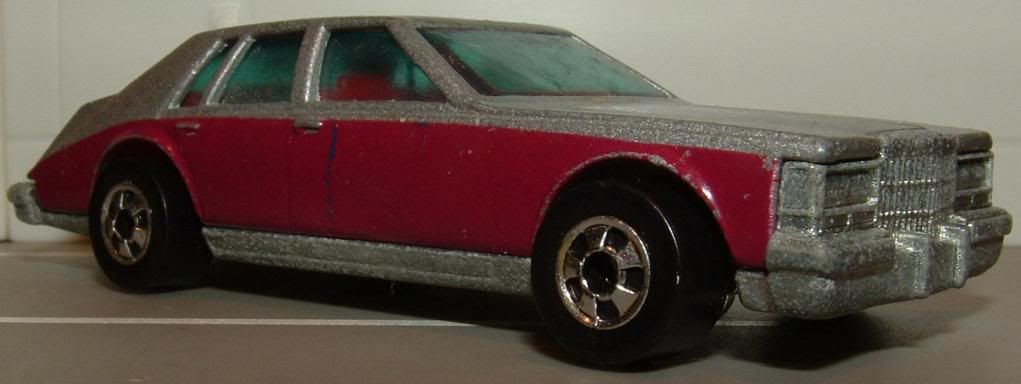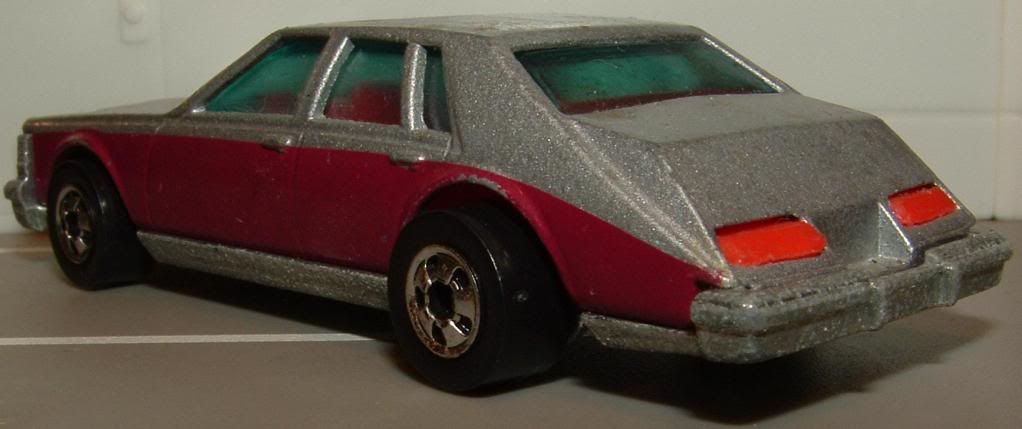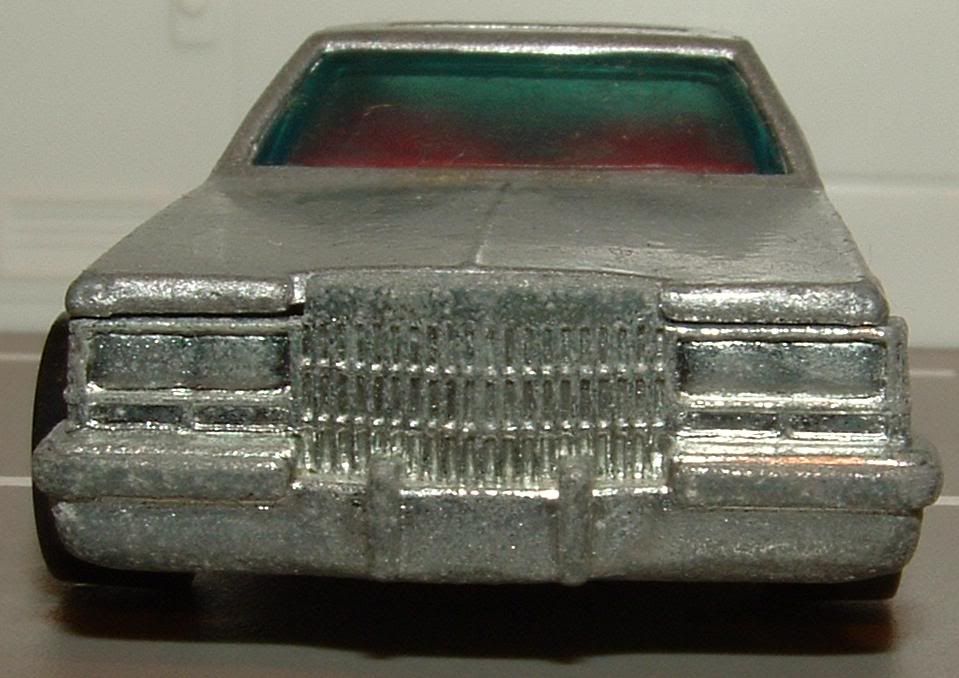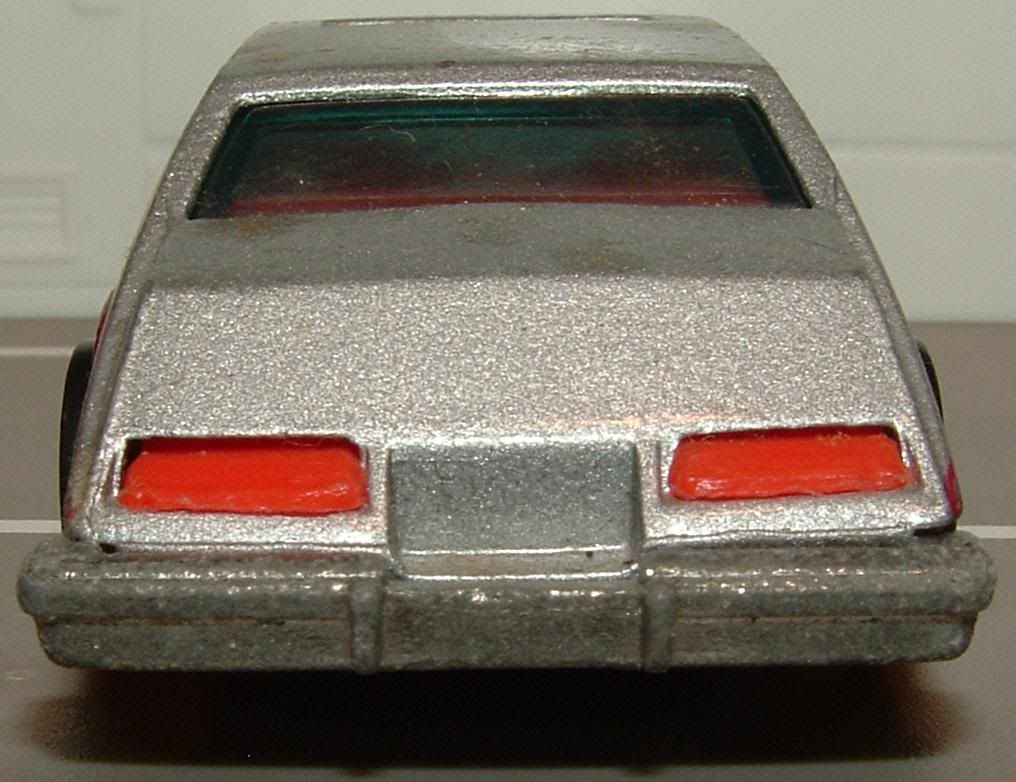Today's car of the day is Hot Wheels' 1980 Cadillac Seville.
The Cadillac Seville is a luxury-type car that was manufactured by the Cadillac division of American automaker General Motors as a limited production specialty model in the 1950s and 1960s. It was usually second in the Cadillac lineup after the top-of-the-line Eldorado. The Eldorado line was more focused on technology than the sales-leader Deville. The Seville was the two-door hardtop body style of the Eldorado line, while the Eldorado Biarritz was the convertible.
Reintroduced as a regular production vehicle from 1975 to 2004, the Seville was a smaller-sized top-of-the-line Cadillac.
The name of "Cadillac's first small car" was selected over a revival of LaSalle and the GM design staff's preference, LaScala, primarily because, notes GM Marketing Director Gordon Horsburgh, "It had no negatives."
For more information and pictures of the real car please visit: Cadillac Seville
Here's one of my childhood survivors- this one came out in okay condition. Looks like it could use a bath as the close-ups show more dirt than the naked eye does.
The new model, one of the last vehicles designed by GM's Bill Mitchell, featured front-wheel drive and independent rear suspension. The Seville initiated features that would become more traditional in later years. In 1981, "memory seats" — a feature not seen on a Cadillac since the Eldorado Broughams of the late 50's — became available again. This option allowed two memorized positions to be recalled at the touch of a button. Also for 1981 was a digital instrument cluster. The "Cadillac Trip Computer" was a precursor to this option in 1979. For the '81-'85 Seville and Eldorado, it was considerably less expensive, at US$200 in '81, and did not contain the many features of Trip Computer, but rather, just a digital speedometer and fuel gauge. "Puncture-sealing" tires were also new for '81. In 1982, Seville offered heated outside rear-view mirrors with the rear defogger option. Inside, a "Symphony Sound" stereo tape system was available. For 1983, a new "Delco/Bose" stereo cassette system was offered at US$895. It featured a brushed gold-look front panel and bulbous lower interior door speaker assemblies giving almost an aftermarket installation look to the system. This was also the last year for the availability of an 8-track stereo system for Seville. On the outside, Seville was available with a "Full Cabriolet Roof" treatment option, which gave Seville the dashing look of a four-door convertible. Cadillac may have provided this due to the popularity of a similar option, available since 1979, on the Lincoln Continental automobiles and Cadillac's own "Phaeton" series of De Ville models in 1978 and 1979.
In hip hop culture, this generation of Sevilles were known as "slantbacks." Sales were respectable at first, but disastrous experimentations with diesel engines (an Oldsmobile sourced 5.7 V8, plagued with head gasket problems) and the ill-fated 1981 V8-6-4 variable displacement engine (1980s technology could not make it work reliably), along with poor quality control and lacklustre performance from engines severely detuned to meet more stringent CAFE standards, began to erode the Seville's standing in the marketplace. A new but underpowered 4.1 litre V8 was fitted to post-1981 models. It was prone to the block becoming porous and coolant mixing with the oil, resulting in catastrophic engine failure. Some later cars were also fitted with the 4.1 litre Buick-derived V6, which was a reliable enough engine, but was not designed for fitment to "full size" cars, and performance was rather lacking.







No comments:
Post a Comment